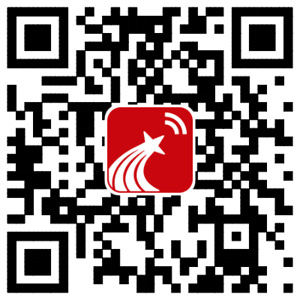限定内容
主题
- 35,073 篇 细胞因子
- 24,284 篇 单克隆抗体
- 17,510 篇 淋巴细胞
- 15,716 篇 抗原
- 13,748 篇 免疫球蛋白
- 10,284 篇 hla
- 10,254 篇 il-6
- 9,974 篇 t淋巴细胞
- 8,311 篇 细胞免疫
- 7,747 篇 tnf
- 7,703 篇 inflammation
- 7,456 篇 tnf-α
- 7,451 篇 肿瘤坏死因子-α
- 7,160 篇 cytokines
- 6,093 篇 儿童
- 5,368 篇 mhc
- 5,138 篇 肿瘤坏死因子
- 5,087 篇 人类
- 5,026 篇 抗体
- 4,966 篇 预后
机构
- 2,653 篇 中国医科大学
- 2,646 篇 第四军医大学
- 2,517 篇 吉林大学
- 2,220 篇 华中科技大学
- 2,006 篇 安徽医科大学
- 1,927 篇 苏州大学
- 1,920 篇 河北医科大学
- 1,844 篇 山西医科大学
- 1,795 篇 山东大学
- 1,746 篇 重庆医科大学
- 1,711 篇 第三军医大学
- 1,626 篇 浙江大学
- 1,502 篇 中山大学
- 1,482 篇 南方医科大学
- 1,455 篇 复旦大学
- 1,405 篇 第二军医大学
- 1,405 篇 郑州大学
- 1,363 篇 天津医科大学
- 1,353 篇 解放军总医院
- 1,308 篇 扬州大学
文献订阅
- NOTCH1信号通路与T细胞急性淋巴细胞白血病的研究进展
- 南京医科大学第一附属医院儿科 江苏南京210029
-
来源
 维普期刊数据库
维普期刊数据库
 中国学术期刊网络出版...
中国学术期刊网络出版...
 万方期刊
详细信息
万方期刊
详细信息
- 单核细胞和淋巴细胞比值、改良格拉斯哥预后评分与进展期胃癌患者胃癌根治术后预后的关系研究
- 南平市第二医院胃肠疝外科 福建南平354200南平市第二医院普外科 福建南平354200南平市第二医院肝胆外科 福建南平354200
-
来源
 维普期刊数据库
维普期刊数据库
 中国学术期刊网络出版...
详细信息
中国学术期刊网络出版...
详细信息
- CRX-527 modulates IL-10 expression in BCG-MSP1C-immunized mice
- School of Health Sciences Universiti Sains MalaysiaHealth Campus16150 Kubang KerianKota BharuKelantanMalaysia
-
来源
 维普期刊数据库
ScienceCitationIndex...
维普期刊数据库
ScienceCitationIndex...
 万方期刊
详细信息
万方期刊
详细信息
- 耐碳青霉烯类肺炎克雷伯菌感染死亡患者危险因素及中性粒细胞与淋巴细胞比值对预后评估价值
- 沧州市中心医院检验科 河北沧州061001邢台市中心医院检验科 河北邢台054000
-
来源
 维普期刊数据库
维普期刊数据库
 中国学术期刊网络出版...
详细信息
中国学术期刊网络出版...
详细信息
- 静注人免疫球蛋白(pH4)联合海曲泊帕乙醇胺片治疗慢性ITP患者的效果
- 吉安市中心人民医院血液科 江西吉安343000吉安市中心人民医院急诊科 江西吉安343000
-
来源
 维普期刊数据库
维普期刊数据库
 中国学术期刊网络出版...
详细信息
中国学术期刊网络出版...
详细信息
- 垂体腺苷酸环化酶激活肽在偏头痛中的作用机制研究进展
- 苏州大学附属第二医院神经内科 苏州215004
-
来源
 维普期刊数据库
维普期刊数据库
 中国学术期刊网络出版...
中国学术期刊网络出版...
 万方期刊
详细信息
万方期刊
详细信息
- 间质性肺疾病临床诊断中支气管肺泡灌洗液细胞分类以及T淋巴细胞检测的价值探讨
- 河北省黄骅市人民医院 河北沧州061100
-
来源
 维普期刊数据库
维普期刊数据库
 万方期刊
详细信息
万方期刊
详细信息
- 老年肺炎患者抗感染治疗中sVCAM-1、ET-1与IL-6水平的变化及其对预后的影响
- 河南省职工医院老年医学二科 河南郑州450000
-
来源
 维普期刊数据库
维普期刊数据库
 万方期刊
万方期刊
 中国学术期刊网络出版...
详细信息
中国学术期刊网络出版...
详细信息
- 不同分子量阿胶的免疫调节作用比较
- 东阿阿胶股份有限公司山东省胶类中药技术创新中心 山东聊城252201国家胶类中药工程技术研究中心 山东聊城252201青岛海洋生物医药研究院 山东青岛266001中国海洋大学 山东青岛266073
-
来源
 维普期刊数据库
维普期刊数据库
 万方期刊
万方期刊
 中国学术期刊网络出版...
详细信息
中国学术期刊网络出版...
详细信息
- IL-17、IL-22、Cys-C、TBA水平与乙肝肝硬化患者肝功能的相关性
- 新郑市公立人民医院检验输血科 河南郑州451100
-
来源
 维普期刊数据库
维普期刊数据库
 万方期刊
万方期刊
 中国学术期刊网络出版...
详细信息
中国学术期刊网络出版...
详细信息

